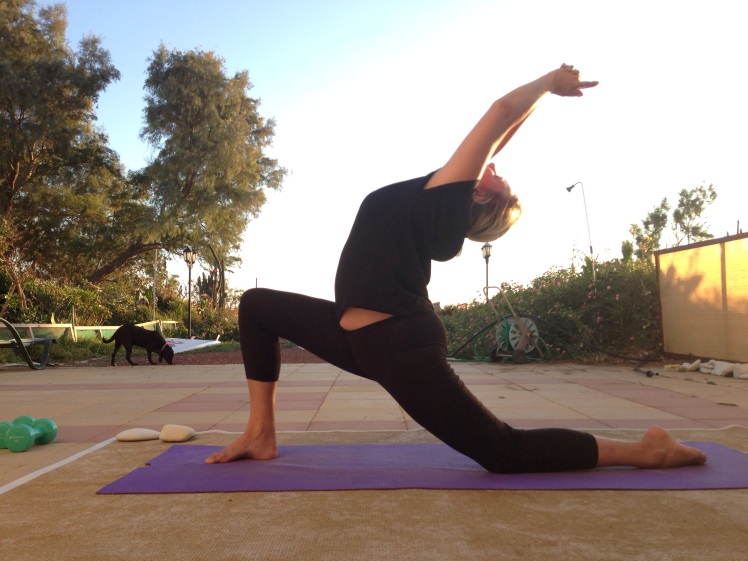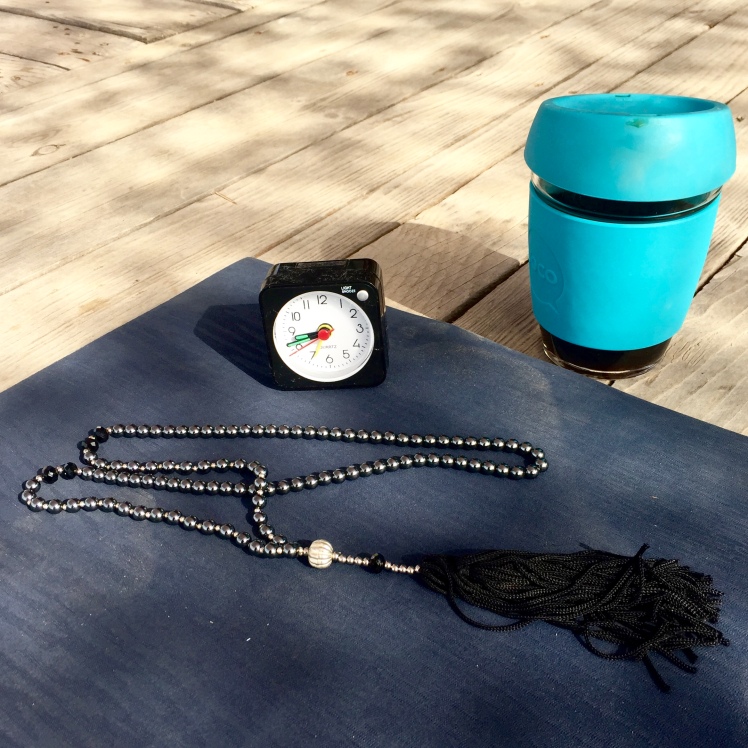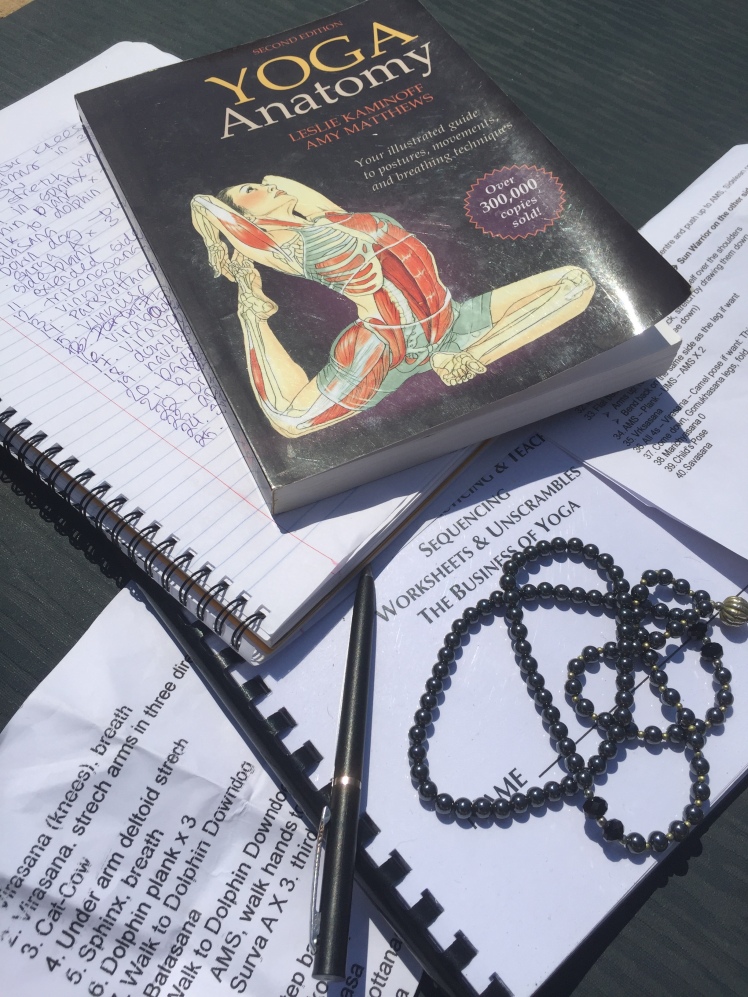Vaikka olen harrastanut joogaa enemmän tai vähemmän säännöllisesti noin kymmenen vuoden ajan en ollut koskaan miettinyt käymieni tuntien sarjoja sen tarkemmin ennen omaa 200-tunnin joogaopettajakoulutusta. Tapanani oli mennä tunnille kun tunnille ja tehdä mitä sanottiin (tai ainakin yrittää), sen kummempia asiaa miettimättä.
Opettajakoulutuksessa jokaisen päivän aamuosuuteen kuului 2-3 tunnin asana-harjoitus. Harjoituksen jälkeen istuimme alas ja kävimme sarjan lävitse. Ryhmässä oli ihmisiä joilla oli ilmiömäinen taito muistaa joka ikinen asana ja vinyasa. Oma muistini toimi näissä tilanteissa kuitenkin tasolla ”ööö me aloitettiin hengittämällä ja lopetettiin kuolleen miehen asanaan. Välissä taisi olla joku soturi-asanoista. Ehkä.”

Minkään harjoituksen tarkoitus ei tietenkään ole vain ja ainoastaan muistaa asanoiden järjestys. Opettajankoulutuksessa sarjan läpikäymisen ideana oli kehittää ajatusta että joogan ohjaukseen kuuluu paljon muutakin kuin asanoiden yhdistely sen mukaan miltä sinä päivänä nyt sattuu tuntemaan. Tiedän toki että on ohjaajia jotka pystyvät improvisoimaan loistavan sarjan. Sanotaan (ja uskon itse) myös, että taitava opettaja ohjaa mitä hän näkee edessään ja tarpeen mukaan hylkää suunnittelemansa sarjan jos se ei tunnu tilanteeseen sopivalta. Jos kuitenkin on uusi joogan ohjaamisessa, ja jos tunnilla käy eritasoisia joogaajia, on usein parempi pelata varman (ja turvallisuuden) päälle ja suunnitella sarja huolella etukäteen.
Mitä ovat sitten hyvän tunnin peruspilarit? Itse aina mietin tunnille teeman ja/tai ”pääasanan” (peak pose, jos tälle joku tietää oikean käännöksen suomeksi kertokaa toki.) Opetan tällä hetkellä viikottaisia tunteja joilla käy muutama vakituinen joogaja: sen vuoksi teen joka viikolle uuden sarjan mutta koitan sisällyttää siihen myös jo läpikäytyjä asanoita jotta vakituisilla ohjattavilla olisi mahdollisuus kehittää asanan tuntemusta ja siten luoda jatkuvuuden tunnetta.
Näiden perusasioiden jälkeen sarjojeni rakennuspalikat ovat samat: Kun kaikki ovat paikalla (saarella asuessa tämä voi hieman venyä ja paukkua… onneksi myöskään kukaan ei ole ovella potkimassa ulos tiettyyn kellonaikaan) on vielä mahdollisuus tarkistaa jos paikalla on ihmisiä kokeilemassa joogaa ensimmäistä kertaa, onko kellään suurempia vaivoja tms. Muistutan myös että joogahetki on mahdollisuus keskittyä itseensä ja harjoitukseen, kaikille paikalla oleville, ja puhelimet on syytä pistää pois ja äänettömälle. Täysikuujoogan alussa muistutan että kuu on taivalla myös tunnin jälkeen ja sen jälkeen siitä saa ottaa rauhassa kuvia. Alkumuistutusten jälkeen aloitetaan hengitykseen keskittyminen, jonka jälkeen on hyvä aika esitellä tunnin teema tai asia johon pyrimme keskittymään. Hyvä alkulämmittely on myös tärkeä, käytän 5-10 minuuttia eri ruuminosien liikutteluun, teeman mukaisesti, ennen aurinkotervehdyksiä. Tämän jälkeen asenat rakentuvat johdattaen itse pääasanaan, jonka jälkeen harjoituksia rauhoitetaan ja se päätetään lopulta kuolleen miehen asanaan, savasanaan.
Eri joogakoulukuntia on useita ja useilla niillä on oma, joskus hyvinkin tarkka, näkökanta sarjojen tekoon. Tällä hetkellä teen omani kuvaamallani tavalla mutta ajan, kokemuksen ja oman harjoitteluni edistyessä ehkä kokeilen muuta lähestymistapaa tulevaisuudessa.

During my decade or so of (more or less) regular yoga practise I rarely paid much attention to the sequencing of the class until I started my 200 hours teacher training last year just before Christmas. I was quite happy to show up to a class and do what I was told to (or at least try…), to be blunt about it.
In the teacher training I did the morning part always included a 2-3 hour asana practise. After this we would sit down and go through the sequence. Whilst some people seemed to have a magical memory that captured every vinyasa between sides and poses, my description always went along the lines ”there was breathing in the beginning and savasana at the end. I am pretty sure at least one of the virabhadrasnas was there somewhere too. Maybe.”
The point of course was not the develop a memory to remember the sequence of every yoga class we walk into. The point was to appreciate that there is more to leading a yoga class than showing up and putting random asanas together. Now, I know there are plenty of good yoga teachers out there who can improvise a wicked sequence. In fact, there is a saying that a really good teachers teach what they see in front of him/her and not necessarily what was planned. But especially if you are a new-ish instructor, or lead a class of variying experiences and abilities, you are probably better off with planning your class with care.
So what are the key components you want to be thinking about? I personally start by thinking about a theme, or what type of peak pose I want to have. I teach weekly classes and have some regulars so I try to avoid too much repetition but also to give some familiar asanas (this would be quite difficult to avoid all together anyway) to give continuity and opportunty to build on past experience for returning students.
With this in mind, the building blocks are simple to follow: Once everybody is in the class and seated on their mat, you give yourself the last chance to check on experience, any injuries or anything else that might be relevant. You centre the people, remind them of the rules (no mobiles anywhere near the mat, please! The full moon will be there in the sky even after the class!) and start drawing the attention to the breath. This is a good time to introduce the theme or what you want the attendees to focus on. A good warm up is also important for me – I prefer a good 5-10 minutes warming before any sun salutations – and from there to build up to the peak pose. A cool down and decent lenght savasana wraps up the practise.
There are several systems of yoga and many of them have their own take on sequencing. This is how I do mine at the moment but as time, experience and my own practise evolved, who knows what it look like in the future.

Tallenna